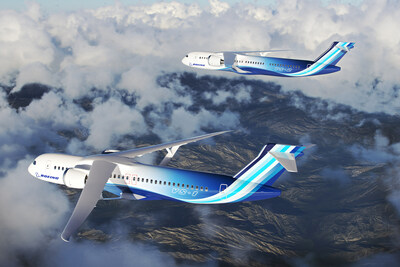World News19.01.2023
Boeing awarded NASA sustainable flight demonstrator contract

QAZAQ GREEN. NASA has selected Boeing [NYSE: BA] and its industry team to lead the development and flight testing of a full-scale Transonic Truss-Braced Wing (TTBW) demonstrator airplane, Boeing reports.
The technologies demonstrated and tested as part of the Sustainable Flight Demonstrator (SFD) program will inform future designs and could lead to breakthrough aerodynamics and fuel efficiency gains.
When combined with expected advancements in propulsion systems, materials and systems architecture, a single-aisle airplane with a TTBW configuration could reduce fuel consumption and emissions up to 30% relative to today's most efficient single-aisle airplanes, depending on the mission. The SFD program aims to advance the civil aviation industry's commitment to reaching net zero carbon emissions by 2050, as well as the goals set forth in the White House's U.S. Aviation Climate Action Plan.
"The SFD program has the potential to make a major contribution toward a sustainable future," said Greg Hyslop, Boeing chief engineer and executive vice president of Engineering, Test & Technology. "It represents an opportunity to design, build and fly a full-scale experimental plane, while solving novel technical problems."
Ultrathin wings braced by struts with larger spans and higher-aspect ratios could eventually accommodate advanced propulsion systems that are limited by a lack of underwing space in today's low-wing airplane configurations. For the demonstrator vehicle, Boeing will use elements from existing vehicles and integrate them with all-new components.
NASA's funding through the SFD Space Act Agreement totals $425 million. The SFD program will also leverage up to $725 million in funding by Boeing and its industry partners to shape the demonstrator program and meet the resource needs required. Separately, Boeing's previous internal investments for recent phases of sustainable aviation research total $110 million.
The TTBW airframe concept is the result of more than a decade of development supported by NASA, Boeing and industry investments. Under previous NASA programs including the agency's Subsonic Ultra Green Aircraft Research program, Boeing conducted extensive wind tunnel testing and digital modeling to advance the design of the TTBW. Early conceptual studies started under NASA's Environmentally Responsible Aviation program.
Australia has planned a 1 GW hydroelectric power plant at former coal pit
Apple ramps up investment in clean energy and water around the world
Two countries in Europe are powered by 100% renewable energy as wind capacity soars
IRENA’s report: Transition to renewables calls for new approach to energy security
New wind power plant to be built in Baku
Cost of bringing wind power plants into operation drops by more than one-third
Energy ministers and leaders to discuss the future of renewable energy in Abu Dhabi
Hungary boasts the EU's largest geothermal system
EC adoped of the strengthened Energy Performance of Buildings Directive
90-GWh thermal energy storage facility could heat a city for a year
Europe embraces speedier, riskier way of building power grids
Former SpaceX, General Motors engineers turn to space-based solar power
The US just beat its goal to permit 25 GW of clean energy by 2025
New quantum material boosts solar cell efficiency to 190%
Astana hosted seminar of the USAID project “Energy of Central Asia”
Uzbekistan launches 500 MW PV plant in Jizzakh province
GIZ and RES School: training specialists for the energy transition in Karaganda
US unveils USD 20bn of awards under Greenhouse Gas Reduction Fund
In Tajikistan, all new houses will be equipped with solar panels
The top 40 most environmentally friendly cities in the world












